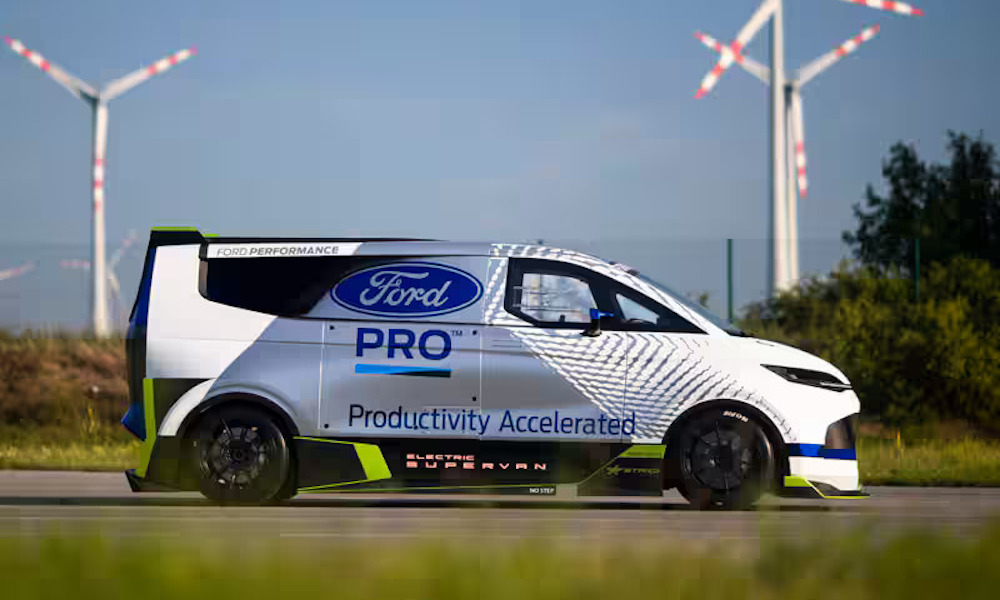The all-electric Ford SuperVan 4.2 has had a record-breaking 12 months, to say the least. Last summer, with Romain Dumas at the helm, it took on Pikes Peak International Hill Climb in the Open category. Despite some issues during the test runs, the modified Transit van completed the 12.5-mile (20.1km) mountainous climb in under nine minutes, smashing the previous class record by 37 seconds.
In February this year, the van conquered Mount Panorama in Australia, breaking three lap records (fastest electric vehicle, fastest commercial vehicle and fastest closed-wheel vehicle) with a 1m56.32s lap time. Next, it raced to the top of Goodwood’s famous hillclimb course in 43.98s, winning the 2024 Festival of Speed shootout by over two seconds.
So how has Ford transformed its Pro E-Transit Custom van into a 2000bhp+ hillclimb monster?
Ford has been developing its SuperVan promotional vehicle concept since 1971. The first iteration, SuperVan 1, was a crude affair, combining a Ford GT40 chassis and its mid-mounted, 5.0-litre Ford V8 engine, with the factory steel bodywork of a Mk1 Transit van.
In 1984, SuperVan 2 came along, this time built using the chassis from a Ford C100 Group C car and a Cosworth DFL engine, all hidden under a glass fibre representation of a Mk2 Transit, with added aerodynamic enhancements.
A decade later, to promote the Mk3 Transit, SuperVan 2 was converted into SuperVan 3, this time using a 3.5-litre Cosworth HB V8 and a reduced scale silhouette body.
2022 then marked a new era in SuperVan history, with the first electric version, the Ford Pro Electric SuperVan 4.0, unveiled at Goodwood. Ford Performance collaborated with Austrian electric racing specialist, STARD, to deliver a 2000+bhp powertrain capable of accelerating the E-Transit Custom-inspired SuperVan from 0 to 100km/h (62mph) in under two seconds. This one stretched the likeness to a regular Transit van to nominal, at best.
Following the success of SuperVan 4.0 at Goodwood, Ford wanted to face the ultimate hillclimb test: Pikes Peak, but this was to prove a whole new challenge.

Pikes Peak is arguably the most fascinating race event for drivers and engineers alike. The start line sits 2800m above sea level with ambient temperatures typically around 20degC. The twisty, mountainous, 20km circuit winds its way up the highest summit of the southern…
Click Here to Read the Full Original Article at Racecar Engineering…

